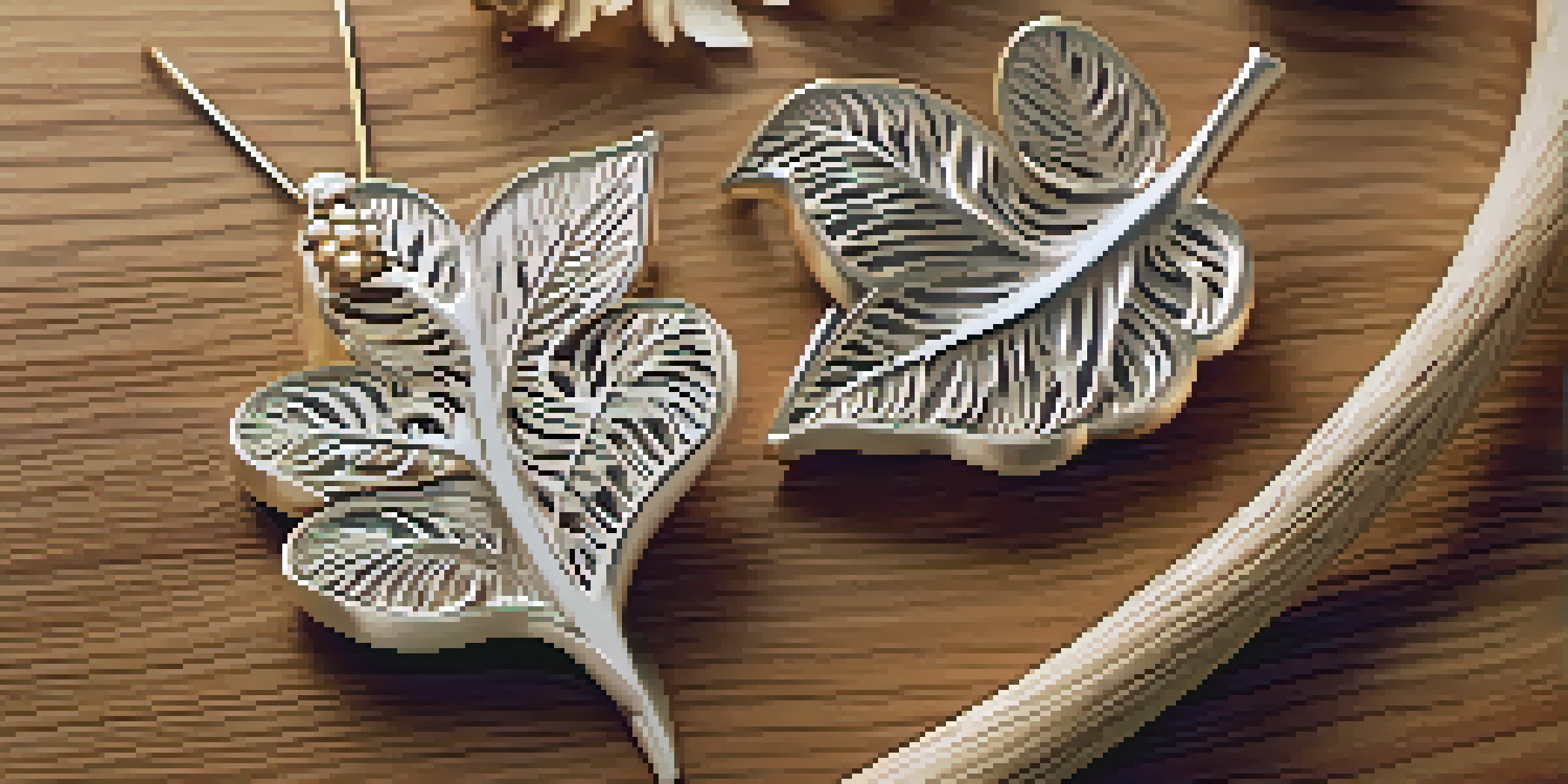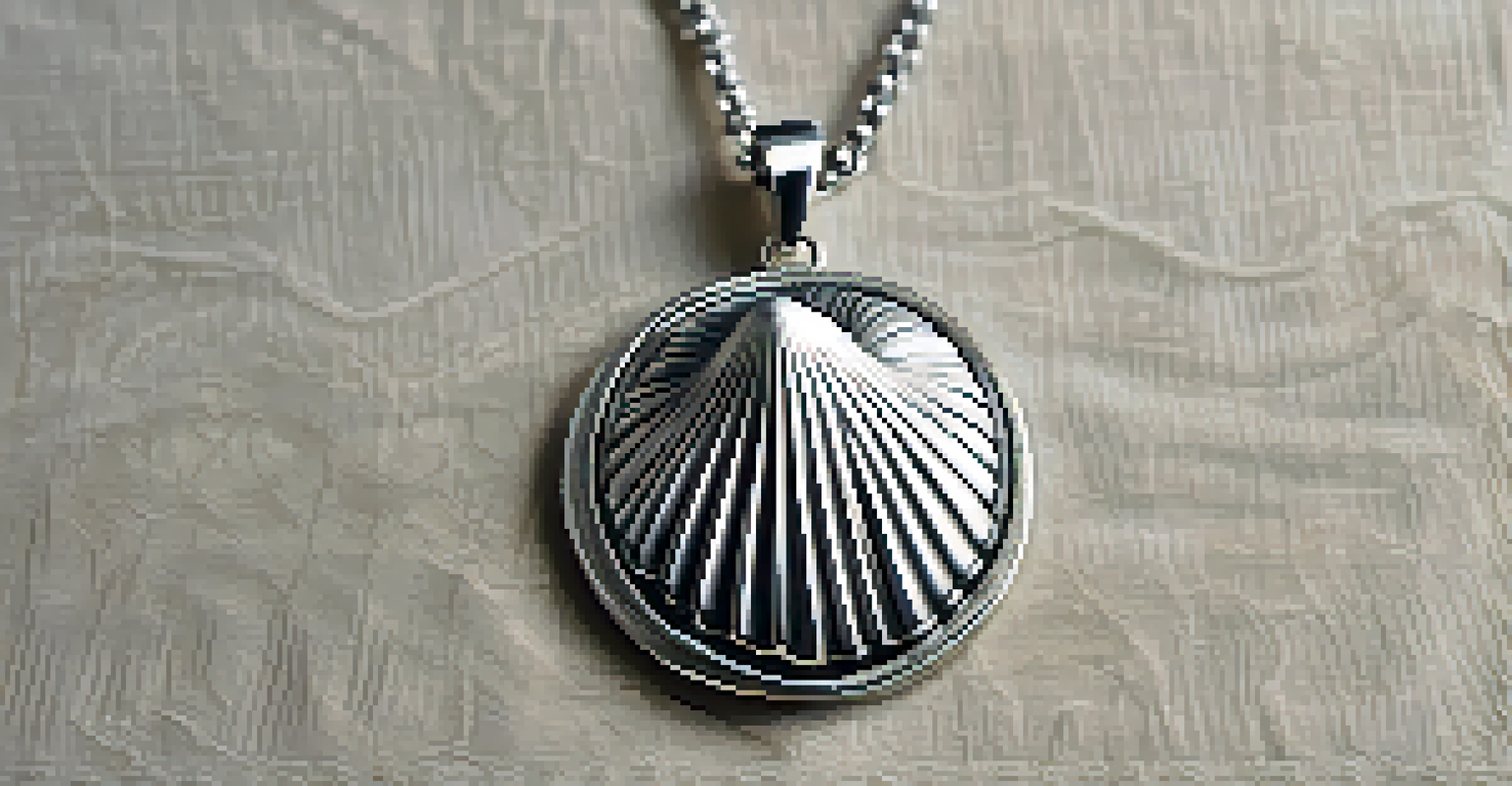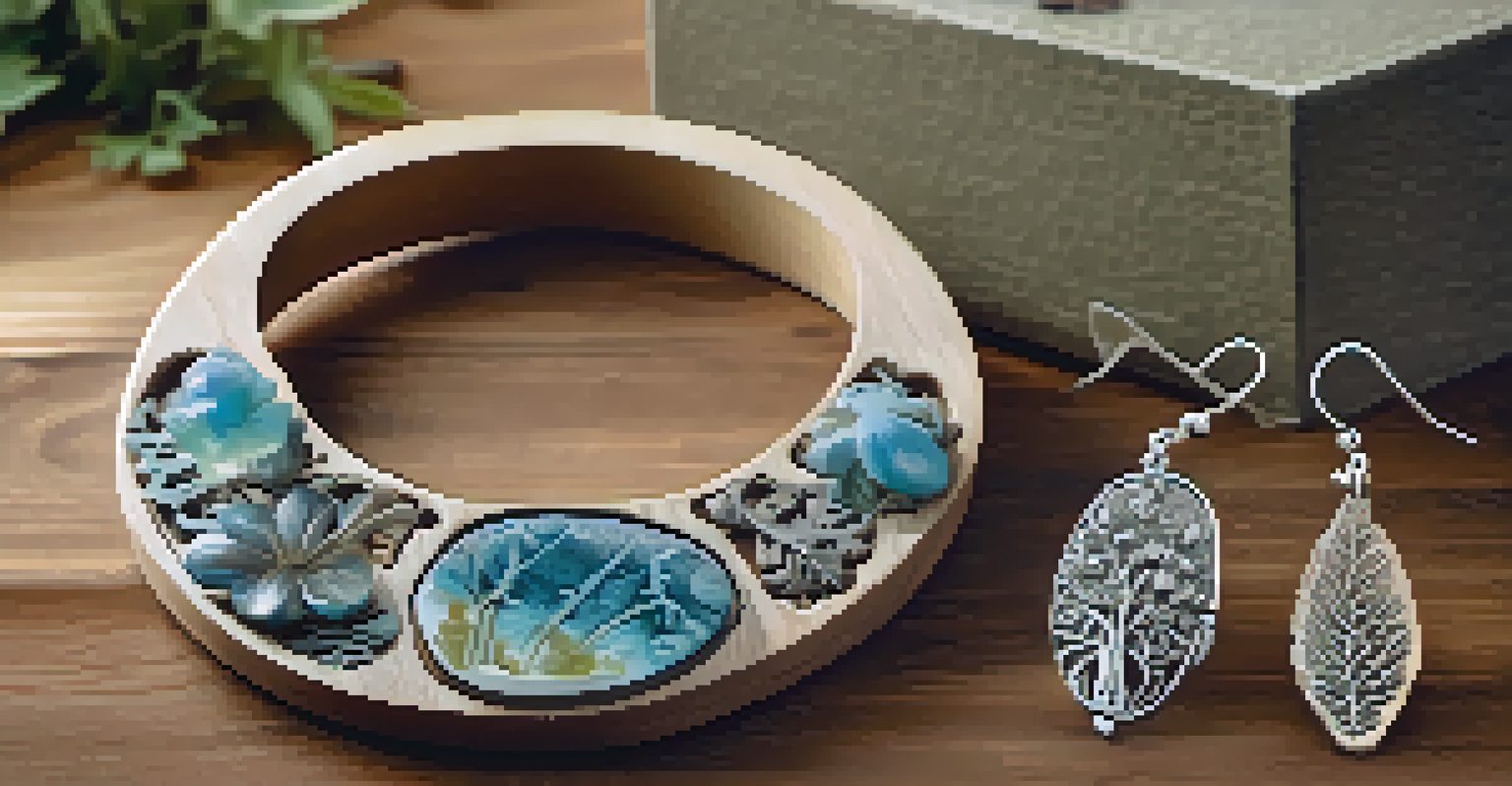The Role of Nature in Inspiring Carved Jewelry Art

The Essence of Nature in Jewelry Design
Nature serves as a profound muse for artists, especially in the world of carved jewelry. The organic forms, colors, and textures found in the natural environment spark creativity and innovation. Jewelers often draw inspiration from the intricate patterns of leaves, flowers, and even animal shapes, translating these elements into wearable art.
Nature is not a place to visit. It is home.
For instance, the curves of a seashell can inspire a pendant, while the delicate veins of a leaf may influence the design of earrings. This connection to nature not only adds beauty but also imbues each piece with a story, creating a deeper emotional resonance with the wearer. As each artist interprets these natural elements, unique styles and expressions emerge.
Moreover, the use of natural materials, such as wood, stone, and precious metals, further enhances this relationship. Each material carries its own characteristics and history, allowing artists to create pieces that are not just visually appealing but also rich in meaning. Ultimately, the essence of nature becomes a fundamental aspect of carved jewelry, shaping its aesthetic and emotional appeal.
Symbolism of Natural Elements in Jewelry
Symbolism plays a crucial role in the design of carved jewelry, often drawing on natural elements to convey deeper meanings. For example, a carved lotus flower may symbolize purity and rebirth, while a tree of life design can represent growth and strength. These symbols resonate with wearers, offering not just beauty but also personal significance.

Artists frequently incorporate these symbols to connect with the buyer on an emotional level. By choosing pieces that align with their values or experiences, individuals can find a sense of identity and empowerment in their jewelry. This intersection between art and meaning elevates carved pieces from mere accessories to cherished symbols of personal stories.
Nature as Inspiration in Jewelry
Jewelers often draw inspiration from natural forms, colors, and textures, translating them into unique, wearable art.
Furthermore, these symbols can be culturally significant, reflecting heritage and traditions. Many cultures attribute specific meanings to various plants, animals, and natural phenomena, allowing jewelers to create pieces that honor these rich histories. This blend of nature and symbolism fosters a deeper appreciation for carved jewelry as it transcends mere aesthetics.
Techniques Inspired by Natural Forms
The techniques used in carved jewelry often mirror the forms and textures found in nature. Jewelers may employ carving methods that emphasize the organic lines and intricate details seen in plants and animals. For example, the technique of relief carving can mimic the way light dances off a leaf's surface, creating a lifelike effect.
Jewelry is like the perfect spice. It always complements what's already there.
Moreover, artists might choose to replicate the roughness of natural stones or the smoothness of pebbles in their designs. This attention to detail not only showcases the skill of the craftsman but also enhances the connection between the piece and its natural inspiration. By embracing these techniques, jewelers breathe life into their creations, making them feel both timeless and contemporary.
In addition, advancements in technology, such as 3D printing, allow artists to experiment with new forms inspired by nature. This fusion of traditional techniques and modern technology opens up endless possibilities for innovation. Consequently, the art of carved jewelry continues to evolve while staying rooted in its natural inspirations.
The Impact of Sustainability on Carved Jewelry
As awareness of environmental issues grows, sustainability has become a vital consideration in the jewelry industry. Many artisans are now sourcing materials from eco-friendly suppliers or using reclaimed resources, ensuring that their creations do not contribute to environmental degradation. This commitment to sustainability resonates with consumers who value ethical practices.
Additionally, designs that reflect natural forms often emphasize a harmony with the environment. By creating pieces that celebrate the beauty of nature, jewelers can inspire wearers to appreciate and protect the world around them. This conscious effort fosters a connection between the jewelry, its creator, and the environment, creating a cycle of respect and admiration.
Symbolism Enhances Jewelry Meaning
Natural elements in jewelry design convey deeper meanings, allowing wearers to connect emotionally with their pieces.
Furthermore, sustainable practices can enhance the story behind each piece, making them even more appealing to buyers. When customers know that their jewelry is crafted with care for the planet, it adds an extra layer of value. Ultimately, sustainability not only influences the materials used but also shapes the artistic vision and message of carved jewelry.
Cultural Inspirations from Nature in Jewelry
Different cultures around the world have long drawn inspiration from nature in their jewelry designs. For instance, Native American artisans often incorporate elements like feathers, animal motifs, and natural stones to reflect their deep connection to the land. These designs tell stories of tradition, spirituality, and identity, celebrating the beauty of the natural world.
Similarly, Asian cultures frequently use floral motifs in their jewelry, symbolizing beauty and purity. Cherry blossoms, for example, are cherished in Japanese art, representing the fleeting nature of life. By integrating these cultural elements into carved jewelry, artists not only pay homage to their heritage but also educate others about the significance of these symbols.
As globalization continues to influence art and design, cross-cultural inspirations are becoming increasingly common. Jewelers may blend elements from various traditions, creating pieces that resonate with a broader audience. This fusion of cultural inspirations enriches the world of carved jewelry, making it a vibrant tapestry of ideas and expressions influenced by nature.
The Process of Creating Carved Jewelry
Creating carved jewelry is a meticulous process that begins with a concept inspired by nature. Artists often sketch their ideas, considering how elements like shape, texture, and symbolism will come together. This initial phase is crucial, as it lays the foundation for the entire piece and ensures that the natural inspiration is effectively captured.
Once the design is finalized, the artist selects appropriate materials, which can vary from wood and stone to precious metals. Each material brings its own characteristics, influencing the carving techniques and final appearance of the jewelry. This selection process is akin to choosing the right canvas for a painting, where the medium plays a significant role in the outcome.
Sustainability Shapes Jewelry Design
The growing emphasis on sustainability in the jewelry industry encourages artisans to source eco-friendly materials and practices.
Finally, the carving itself requires skill and precision, often taking hours or even days to complete. Artists must pay close attention to detail, ensuring that every curve and line reflects the beauty of the natural world. This dedication to craftsmanship not only results in stunning pieces of art but also honors the very inspiration that sparked their creation.
The Future of Nature-Inspired Jewelry Art
As the world continues to evolve, the future of nature-inspired carved jewelry looks bright. With a growing appreciation for sustainability and ethical practices, artists are increasingly motivated to incorporate natural elements into their designs. This trend not only reflects consumer values but also encourages a deeper connection to the environment.
Moreover, advancements in technology are expanding the creative possibilities for jewelers, allowing for innovative designs that push the boundaries of traditional techniques. This fusion of art and technology enables the exploration of new forms and materials, ensuring that nature remains a constant source of inspiration.

Ultimately, the future of carved jewelry will likely reflect a harmonious blend of tradition and modernity, where the beauty of nature continues to inspire artists and resonate with wearers. As we move forward, the relationship between nature and jewelry art will undoubtedly flourish, creating a vibrant landscape of creativity and expression.